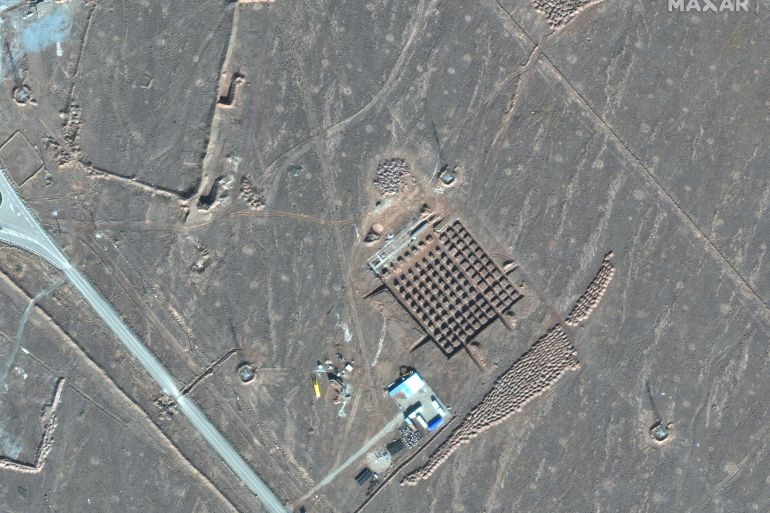Iran installs new centrifuges as nuclear deal impasse continues
Experts say new centrifuges do not present significant hurdle if Iran, US agree on a way to restore nuclear deal.

Tehran, Iran – Iran says it has installed new and more advanced centrifuges at its two main nuclear sites, a development that has been confirmed by the United Nations’ nuclear watchdog.
Kazem Gharibabadi, Iran’s envoy to the International Atomic Energy Agency (IAEA), announced on Tuesday that new cascades of centrifuges at the underground Natanz and Fordow sites were installed.
Keep reading
list of 4 itemsEU lawmakers approve ‘right to repair’ law
Why is Germany maintaining economic ties with China?
Are more European nations finally moving to recognise Palestine statehood?
“Two cascades of 348 IR2m centrifuges with almost four times the capacity of IR1 are now running with UF6 successfully in Natanz,” he wrote on Twitter in reference to uranium hexafluoride that is used in enriching uranium.
“Installation of two cascades of IR6 centrifuges has also been started in Fordow. There’s more to come.”
Reuters news agency reported that the IAEA’s latest report to member states confirms Iran’s announcement.
Last week, parliamentary speaker Mohammad Bagher Ghalibaf, during a visit to Fordow, said that Iran has produced 17kg (37.5 pounds) of 20 percent enriched uranium in less than one month.
On Monday, US Secretary of State Antony Blinken said Iran could be months, or even weeks, away from developing enough fissile material for a nuclear bomb if it continued on the current path.
Iran, meanwhile, has maintained its nuclear programme is for peaceful purposes.
Iran had already started enriching uranium using a cluster of 174 IR2m machines at Natanz.
The installation is the latest move by Iran to reduce its commitments under the Joint Comprehensive Plan of Action (JCPOA), the 2015 nuclear deal it signed with world powers.
Former United States President Donald Trump unilaterally abandoned the deal in 2018, imposing harsh sanctions on Iran. Iran gradually scaled back its commitments a year after the US withdrawal.
But after Iran’s top nuclear scientist Mohsen Fakhrizadeh was assassinated in November 2020, its parliament passed a law that demanded a further reduction of nuclear commitments.
If the US does not lift sanctions on Iran’s banking and oil sectors by February 21, President Hassan Rouhani’s government is legally obligated to limit the access of IAEA inspectors to its nuclear sites.
“I don’t believe the new centrifuges would have a significant impact on the possibility or timing of returning to the nuclear deal,” said Abas Aslani, a senior researcher at the Tehran-based Center for Middle East Strategic Studies.
“The issue of sequencing and the timing and quality of returning to commitments under the nuclear deal would take more time rather than the technical issues,” he told Al Jazeera.
Joe Biden’s administration has promised to restore the deal, but a disagreement over who needs to return to commitments first has created an impasse.
According to Trita Parsi, executive vice president for the Washington-based Quincy Institute for Responsible Statecraft, Iran is seeking to “raise the cost of the status quo” as it fears Biden may be slow-walking the US return to the nuclear deal.
“While problematic for the US in the short run, the Iranian measure does not necessarily create a long-term problem since the cascades can easily be dismantled,” he told Al Jazeera.